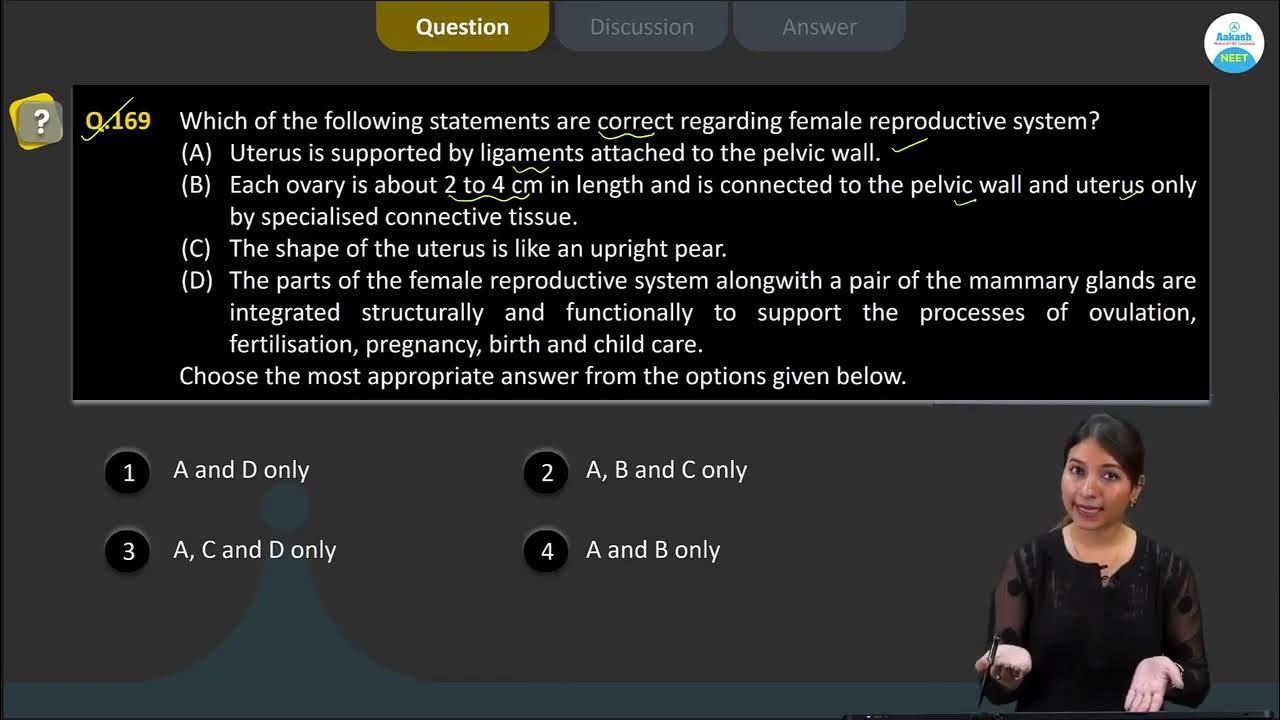MENSTRUAL CYCLE (Ovarian Cycle, Uterine Cycle, Folliculogenesis, Oogenesis)
Summary
TLDRThe video explores the intricacies of female reproductive biology, focusing on the ovarian and uterine cycles. It explains how primary oocytes develop into mature eggs, detailing the phases of folliculogenesis and the hormonal interplay governed by the hypothalamic-pituitary-gonadal (HPG) axis. Key hormones like GnRH, LH, and FSH regulate follicular growth and ovulation, leading to the formation of the corpus luteum, which supports potential pregnancy. The uterine cycle is also examined, highlighting menstruation, the proliferative phase, and the secretory phase, all intricately linked to ovarian hormone production. This informative guide sheds light on the female reproductive system's complex functionality.
Takeaways
- 😀 Oogenesis begins during fetal development, and females are born with all primary oocytes, which remain inactive until puberty.
- 😀 The menstrual cycle consists of ovarian and uterine cycles, each with distinct phases: follicular, ovulation, luteal (ovarian), and menstruation, proliferation, secretory (uterine).
- 😀 Folliculogenesis is the maturation process of ovarian follicles, which involves multiple stages and typically takes almost a year for a follicle to mature.
- 😀 The follicular phase is marked by rising FSH levels, leading to the recruitment and maturation of a cohort of follicles.
- 😀 A dominant follicle emerges during the follicular phase, promoting its own growth while suppressing others through hormonal feedback.
- 😀 The LH surge, triggered by high estrogen levels, leads to ovulation, where the egg is released from the mature follicle.
- 😀 After ovulation, the corpus luteum forms from remaining granulosa and theca cells, secreting progesterone to prepare the endometrium for potential implantation.
- 😀 If fertilization occurs, human chorionic gonadotropin (HCG) maintains the corpus luteum, allowing it to continue producing hormones to support pregnancy.
- 😀 The uterine cycle begins with menstruation, triggered by the withdrawal of progesterone, leading to the shedding of the endometrial lining.
- 😀 Estrogen secreted by growing follicles promotes the regeneration of the endometrial lining during the proliferation and secretory phases of the uterine cycle.
Q & A
What is the process of oogenesis?
-Oogenesis is the production of an ovum or egg cell, starting with the development of primary oocytes during the fetal stage. A woman is born with all her primary oocytes, which halt at prophase one of meiosis until puberty.
What are the phases of the ovarian cycle?
-The ovarian cycle consists of three phases: the follicular phase, ovulation, and the luteal phase. During the follicular phase, ovarian follicles mature; ovulation is the release of the egg; and the luteal phase involves the formation of the corpus luteum.
How does the hypothalamic-pituitary-gonadal (HPG) axis regulate the menstrual cycle?
-The HPG axis regulates the menstrual cycle through the release of gonadotropin-releasing hormone (GnRH) from the hypothalamus, which stimulates the anterior pituitary to release luteinizing hormone (LH) and follicle-stimulating hormone (FSH).
What is folliculogenesis?
-Folliculogenesis is the maturation process of an ovarian follicle, which contains the oocyte and its supporting cells. A woman is born with primordial follicles, and development occurs continuously, with only a few follicles maturing each menstrual cycle.
What role does FSH play during the menstrual cycle?
-Follicle-stimulating hormone (FSH) promotes the recruitment and maturation of follicles during the first part of the follicular phase. It acts as a survival factor, preventing the apoptosis of these follicles.
What is the significance of the LH surge?
-The LH surge, which occurs around day 12 of the menstrual cycle, is crucial for triggering ovulation. It matures the dominant follicle and leads to the explosive release of the oocyte.
What happens to the corpus luteum if fertilization does not occur?
-If fertilization does not occur, the corpus luteum degenerates into scar tissue called the corpus albicans after about two weeks, leading to a rapid decline in progesterone and estrogen levels, which triggers menstruation.
What occurs during the menstrual phase of the uterine cycle?
-During the menstrual phase, the endometrial lining sheds due to the withdrawal of progesterone, leading to the release of menstrual fluid, which consists of blood, tissue, and enzymes.
How do estrogen and progesterone influence the endometrium?
-Estrogen promotes the growth of the endometrial lining during the proliferative phase, while progesterone, produced by the corpus luteum, prepares the endometrium for potential implantation of a fertilized egg during the secretory phase.
What triggers the end of menstruation and the start of the proliferative phase?
-The end of menstruation and the onset of the proliferative phase are triggered by increasing estrogen levels produced by growing follicles, which stimulate the regeneration of the endometrial epithelium.
Outlines

This section is available to paid users only. Please upgrade to access this part.
Upgrade NowMindmap

This section is available to paid users only. Please upgrade to access this part.
Upgrade NowKeywords

This section is available to paid users only. Please upgrade to access this part.
Upgrade NowHighlights

This section is available to paid users only. Please upgrade to access this part.
Upgrade NowTranscripts

This section is available to paid users only. Please upgrade to access this part.
Upgrade NowBrowse More Related Video

Female Reproductive Cycles Made Easy!

Reproductive System, Part 1 - Female Reproductive System: Crash Course Anatomy & Physiology #40

AIATS MEDICAL ZOOLOGY OYM TEST 0120 07 25 Q166 170

[eSVT] Schéma fonctionnel de la production d'hormones chez la femme

Reproductive cycle graph-Follicular phase | NCLEX-RN | Khan Academy

Female Reproductive Cycle | Ovulation & Menstrual Cycle: Overview
5.0 / 5 (0 votes)